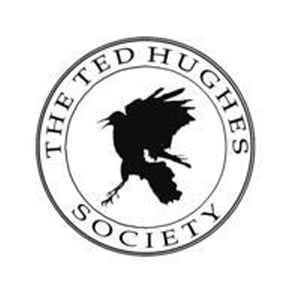Poetry by Ted Hughes
Remains of Elmet (London: Faber and Faber, 1979)/Elmet (London: Faber and Faber, 1994)
Edward Hadley (Open University, UK) considers Hughes's 'Pennine Sequences',Remains of Elmet and Elmet.
Remains of Elmet marks a departure from Hughes myth laden sequences of poetry which he produced in the 1970s. After the likes of Crow, Cave Birds and Gaudete,Remains of Elmet appears downbeat by comparison with its sparse lines of verse and bleak black and white high contrast photographs of the West Yorkshire landscape as taken by Hughes's collaborator on this project Fay Godwin.
Hughes's poetic vision of the Calder Valley, a region formerly referred to by the Celts as 'Elmet', is not a wistful and rose-tinted appreciation of the area he grew up in. His poems depict a weather beaten landscape and people and the vestiges of industrial enterprise, religious custom and ancient tradition. Here, the only survivor among these remains, the only 'thing' to flourish, is nature as it reclaims the land from those who inhabit it. This underlying conflict is foregrounded by allusions to the First World War where the valley is at once an extension of the Western Front and a site of remembrance with repeated allusions to the cenotaph and the war dead. Survivors of this conflict and the generation of inhabitants who have witnessed its economic demise become anachronisms, symbolic of an inertia crippling attempts of tame the valley.
There seems to be an underlying admiration of nature's persistence, of the long game it is unconsciously playing with the fleeting lives that encroach upon it. Yet it is also a portrait of a stoic populace whose relationship with the valley is depicted both as hostile and intimate.
The publication history of Remains of Elmet appears to reflect the tumultuous nature of the landscape and the people it depicts. The second published revision ofRemains of Elmet appears as one of the Three Books of Hughes 1993 'collection.' Here, old poems are given new titles, uncollected poems find themselves collected, and some old poems find they are omitted. The most striking omission is of the photographs. These are restored in the final version of this sequence published asElmet in 1994. The poetry of Elmet follows the model of the Three Booksversion whilst also including poems originally published in collections as early as The Hawk in the Rain and as late as Wolfwatching and with additional photographs not seen in Remains of Elmet. Here word and deed seem to conflict. Hughes writes to Godwin of how indispensible the photographs are to the poems (Letters, 420-1) and yet the subsequent revisions of the sequence marry different photographs with different poems, or omit certain poems and certain photographs altogether. It is likely that the cost of publication and matters of space were partly responsible for the omission of the photographs in Three Books, but the change of photographs inElmet indicates a shift in perspective in the intervening years since the publication ofRemains of Elmet. Gone is that prefix, ‘remains’, signalling that Hughes’s last re-working of the poems offers something more complete; the inclusion of poems from volumes of Hughes’s poetry outside of his Pennine sequences also indicate that to a degree Elmet is more of an anthology, a sequence of poetry collecting those verses which have the Calder Valley as their locus in some way.
Remains of Elmet is a most rewarding collection of poetry though not for reasons one may expect. Its sometimes jagged verse, occasionally bordering on a minimalism of sorts, may not please those more accustomed to Hughes's more popular poems of nature. Yet multiple readings reveal the social, political, religious and historical poetic tapestry Hughes has woven, one rich in personal investment and admiration of a landscape that both creates and destroys its people.
Edward Hadley teaches for the Open University and is the author of The Elegies of Ted Hughes, he is also a course developer in Modern Poetry for SIM University, Singapore. His next book, Andrew Motion: A Critical Study, is to be published by Liverpool University Press.
